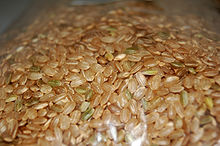
MANILA, Philippines (PIA/DOST) — The “unli-rice” phenomenon is proof that rice is the most commonly consumed food item of Filipinos.
Rice is the staple food among Filipinos which contributes about 35.7 percent of the average daily individual food intake, making it the major source of carbohydrates in the Filipino diet. The Food Consumption Survey (FCS) by the Food and Nutrition Research Institute of the Department of Science and Technology (FNRI-DOST) showed that the daily rice intake per person has risen from 272 grams in 1993 to 291 grams in 2003 and 307 grams 2008.
Rice has several types, varieties and forms. Its type is usually based on grain size, thus we have, long grain, medium grain, short grain or waxy. Its varieties usually depend of the source or area where rice is grown. In the Philippines, common varieties include Dinorado, Sinandomeng, Milagrosa, Maharlika, Angelika, Malagkit, Wagwag, Ifugao or mountain rice, among others.
Rice forms include rough or paddy rice which still includes the hull, brown rice where only the hull is removed, and regular milled rice which is often referred to as white or polished rice.
Brown rice, the unmilled form of rice, is gaining popularity today primarily due to its nutritional benefits. The bran layer of brown rice is known to be rich in dietary fiber, minerals and B vitamins.
Brown rice has higher nutrient, vitamin and mineral content despite poor acceptability and shelf life in comparison to milled rice. Brown rice is more nutritious than white rice in terms of niacin, thiamin, phosphorus and calcium. Moreover, it provides all the necessary carbohydrate requirements of an individual just like white rice. The dietary fiber it contributes is attributed to the prevention of risk of obesity, diabetes mellitus, cardiovascular diseases and some forms of cancer.
Brown rice is a healthier alternative that will hopefully reduce the demand for white rice while increasing the intake for micronutrients and dietary fiber. These nutrients has been associated with the prevention of micronutrient deficiencies and lifestyle-related diseases like diabetes and some forms of cancer.
At present, the Food and Nutrition Research Institute of the Department of Science and Technology (FNRI-DOST) has successfully developed the technology for extending the shelf-life of brown rice so that now, we can store it at a much longer time. The Institute is also currently undertaking studies on characterization and bioavailability to support the growing interest about this food.
For more information on food and nutrition, contact: Dr. Mario V. Capanzana, Director, Food and Nutrition Research Institute, Department of Science and Technology, General Santos Ave., Bicutan, Taguig City; Tel/Fax Number: 837-2934 and 837-3164; e-mail: mvc@fnri.dost.gov.ph, mar_v_c@yahoo.com; FNRI-DOST website: http://www.fnri.dost.gov.ph. (Charina A. Javier, FNRI-DOST S&T Media Service/PIA-Caraga)








